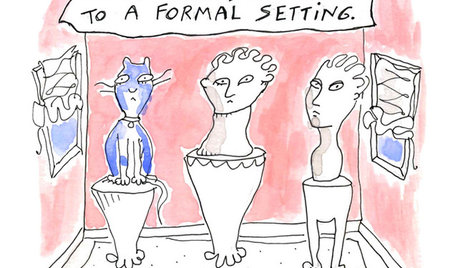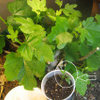Help ID this lemon tree
Laurel Zito
12 years ago
Related Stories

GARDENING GUIDESHow to Keep Your Citrus Trees Well Fed and Healthy
Ripe for some citrus fertilizer know-how? This mini guide will help your lemon, orange and grapefruit trees flourish
Full Story
WINTER GARDENINGHow to Help Your Trees Weather a Storm
Seeing trees safely through winter storms means choosing the right species, siting them carefully and paying attention during the tempests
Full Story
SELLING YOUR HOUSE10 Low-Cost Tweaks to Help Your Home Sell
Put these inexpensive but invaluable fixes on your to-do list before you put your home on the market
Full Story
MOST POPULAR7 Ways Cats Help You Decorate
Furry felines add to our decor in so many ways. These just scratch the surface
Full Story
BATHROOM WORKBOOKStandard Fixture Dimensions and Measurements for a Primary Bath
Create a luxe bathroom that functions well with these key measurements and layout tips
Full Story
LIFE12 House-Hunting Tips to Help You Make the Right Choice
Stay organized and focused on your quest for a new home, to make the search easier and avoid surprises later
Full Story
PETSHow to Help Your Dog Be a Good Neighbor
Good fences certainly help, but be sure to introduce your pup to the neighbors and check in from time to time
Full Story
EARTH DAYHow to Help Your Town’s Beneficial Birds and Bugs
Make a habitat using local materials to provide a home to the creatures that help our gardens
Full Story
ARCHITECTUREHouse-Hunting Help: If You Could Pick Your Home Style ...
Love an open layout? Steer clear of Victorians. Hate stairs? Sidle up to a ranch. Whatever home you're looking for, this guide can help
Full StorySponsored
Most Skilled Home Improvement Specialists in Franklin County
More Discussions








tidusid
big_black_cat
Related Professionals
Bridgetown Landscape Architects & Landscape Designers · Wakefield Landscape Contractors · Bellefontaine Neighbors Landscape Contractors · Darien Landscape Contractors · Dixon Landscape Contractors · Kahului Landscape Contractors · Mastic Beach Landscape Contractors · Middletown Landscape Contractors · Newnan Landscape Contractors · Norwalk Landscape Contractors · Parker Landscape Contractors · Vashon Landscape Contractors · Vineyard Landscape Contractors · Wanaque Landscape Contractors · Quartz Hill Landscape Contractorsmksmth zone 7a Tulsa Oklahoma
redshirtcat
hoosierquilt USDA 10A Sunset 23 Vista CA
redshirtcat
Laurel ZitoOriginal Author
hoosierquilt USDA 10A Sunset 23 Vista CA
Laurel ZitoOriginal Author
Laurel ZitoOriginal Author